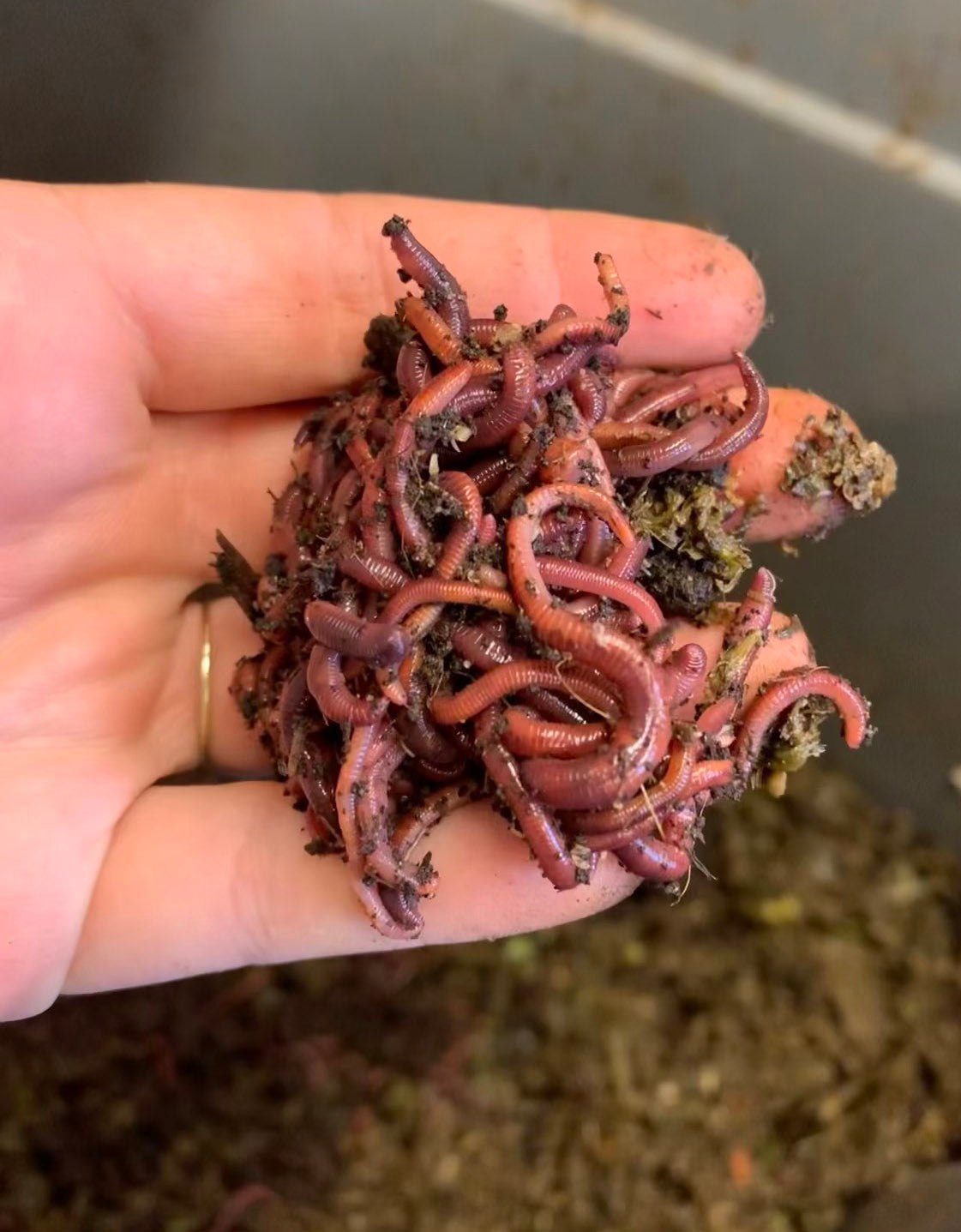Red Wigglers: The Unsung Heroes of Organic Waste Recycling
Red wigglers, or Eisenia fetida, offer as essential representatives in the organic waste recycling procedure, changing discarded products right into important vermicompost. As the globe significantly seeks solutions to battle waste buildup and enhance agricultural performance, comprehending the role of these worms comes to be vital.
What Are Red Wigglers?
The amazing strength of red wigglers, clinically referred to as Eisenia fetida, emphasizes their important role in natural waste recycling. These small, reddish-brown earthworms are commonly discovered in decomposing raw material, such as garden compost piles and manure loads. Lake Hickory Bait. Unlike other earthworm types, red wigglers thrive in nutrient-rich settings and are highly effective at breaking down organic products, making them important for vermicomposting

(Red Wiggler Express)Along with their role in waste reduction, red wigglers add to dirt health by improving dirt framework and oygenation through their tunneling activities (Lake Hickory Bait). Their visibility in composting systems not just enhances disintegration rates but likewise advertises a lasting strategy to waste administration, showing their relevance in eco-friendly conservation efforts
Benefits of Composting With Worms
Composting with worms, especially red wigglers, provides many benefits that boost both waste monitoring and dirt wellness. These worms successfully damage down natural waste, transforming it right into nutrient-rich vermicompost that improves dirt. This procedure speeds up decay, enabling a quicker recycling of kitchen area scraps and other organic materials contrasted to typical composting approaches.
In addition, the vermicompost created by red wigglers is including beneficial microorganisms, which help improve soil framework, oygenation, and wetness retention. This improves the overall health of plants, advertising strenuous development and boosted yields in gardens and farming setups. The usage of worms in composting reduces the production of greenhouse gases, such as methane, adding to a much more lasting waste monitoring system.

Exactly How to Beginning Vermicomposting
Developing a vermicomposting system is a simple process try here that can generate substantial benefits for both waste administration and dirt enrichment. To start, pick a suitable container, such as a plastic bin or wooden box, with sufficient air flow openings to make certain correct airflow. The dimensions should ideally be around 2 feet by 3 feet, enabling adequate area for the worms to prosper.
Following, prepare bed linens product, which can contain shredded paper, cardboard, or coconut coir. This bed linens needs to be moistened to create a suitable habitat for the worms. Once the bedding is in place, present red wigglers (Eisenia fetida) right into the container, typically around one extra pound of worms for every single square foot of surface.
Adhering to the positioning of worms, include organic waste, such as fruit and vegetable scraps, coffee grounds, and crushed eggshells. Avoid including milk, meat, or oils, as these can develop odors and draw in insects. Position the bin in a shaded, temperature-controlled location to preserve ideal conditions for worm task. With these actions, you will successfully initiate a vermicomposting system that adds to lasting waste administration and enhances your soil.
Maintaining a Healthy Worm Bin
(Lake Hickory Bait)Keeping a worm container prospering requires normal attention and like guarantee the health of the red wigglers and the effectiveness of the composting process. Correct maintenance starts with keeping track of the dampness levels; the container should perspire but not soaked. A good general rule is to maintain a consistency comparable to a wrung-out sponge.
Gently mixing the bed linen and food scraps every couple of weeks prevents compaction and guarantees that all worms have accessibility to oxygen. In addition, it is vital to feed the worms appropriately.
Temperature guideline is an additional essential aspect. Red wigglers flourish in a variety of 55 to 77 levels Fahrenheit. If the container comes to be also warm or cool, the worms may become stressed - Lake Hickory Bait. Regularly inspect for indications of wellness, such as worm population growth and the presence of healthy castings. By diligently managing these factors, one can maintain a robust and effective worm container.
Impact on Lasting Living
The effective maintenance of a worm bin not only profits the health and wellness of red wigglers however also contributes significantly to lasting living methods. By recycling organic waste, such as cooking area scraps and lawn debris, red wigglers help draw away considerable amounts of product from land fills. This reduction in waste not only lowers greenhouse gas discharges but additionally lessens the environmental burden linked with waste administration.
Furthermore, the spreadings created by red wigglers act as a nutrient-rich natural fertilizer, enhancing dirt health and advertising plant growth. This all-natural option to chemical plant foods sustains sustainable agriculture and gardening methods, decreasing dependence on synthetic inputs that can damage environments. Additionally, worm composting promotes awareness of waste administration, encouraging people and areas to adopt even more lasting routines.

Final Thought
In recap, red wigglers act as essential factors to organic waste recycling through their efficient decay of organic materials. Their capability to create nutrient-rich vermicompost boosts dirt wellness and sustains lasting farming techniques. By incorporating vermicomposting right into waste monitoring approaches, people and areas can significantly reduce waste while promoting ecological sustainability. The duty of Eisenia fetida in cultivating healthy and balanced ecosystems underscores the importance of these microorganisms in attaining lasting living and improving soil fertility.